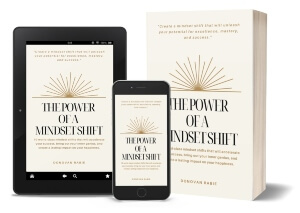In today’s fast-paced world, where connections are often fleeting and relationships are formed and broken with ease, it is crucial to understand the profound impact that early relationships have on our lives. Attachment wounds, stemming from childhood experiences, can shape our emotional well-being, self-esteem, and ability to form healthy connections later in life. In this comprehensive article, we delve into the concept of attachment wounds, explore their effects, and provide valuable insights into the healing process. By understanding and addressing these wounds, we can embark on a journey of self-discovery and forge stronger, more fulfilling relationships.
In This Article
ToggleWhat are Attachment Wounds?
Attachment wounds refer to the emotional and psychological injuries that occur as a result of unsatisfying or harmful interactions during early childhood. These wounds typically stem from disruptions in the bond between an infant or child and their primary caregiver, such as a parent or guardian. Healthy attachment is essential for the child’s emotional development, as it provides a secure base from which they can explore the world and regulate their emotions.
10 world-class mindset shifts that will…
~ Accelerate your success.
~ Bring out your inner genius.
~ Create a lasting impact on your happiness.
Price From: $5.18
The Impact of Attachment Wounds
Attachment wounds can have far-reaching consequences throughout an individual’s life. When a child’s emotional needs go unmet or are inconsistently fulfilled, it can lead to a variety of challenges in adulthood. Here are some key impacts of attachment wounds:
1. Emotional Regulation Difficulties
Individuals with attachment wounds often struggle to regulate their emotions effectively. They may experience heightened levels of anxiety, difficulty managing stress, or a tendency to detach from their emotions altogether. This can result in difficulties maintaining stable relationships and responding appropriately to emotional situations.
2. Low Self-Esteem and Insecurity
Attachment wounds can deeply affect an individual’s self-esteem and sense of self-worth. Feelings of insecurity, self-doubt, and unworthiness may be ingrained, leading to a constant need for external validation and approval. These individuals may find it challenging to develop a healthy sense of self and may seek validation in unhealthy ways.
3. Fear of Intimacy and Avoidant Behavior
For those with attachment wounds, the fear of intimacy can be overwhelming. The vulnerability and potential for rejection that come with deep emotional connections can trigger intense anxiety. Consequently, individuals may develop avoidant behaviors and struggle to form and maintain close relationships.
4. Patterns of Codependency
Attachment wounds can also lead to patterns of codependency, where individuals excessively rely on others for their emotional well-being. They may seek out relationships where they can play the role of a caregiver or people-pleaser, perpetuating unhealthy dynamics. These patterns often result from a fear of abandonment and a desire to avoid the pain of re-experiencing attachment wounds.
Healing Attachment Wounds
While the effects of attachment wounds can be challenging, it is essential to remember that healing is possible. Here are some strategies and practices that can aid in the healing process:
1. Self-Awareness and Reflection
Developing self-awareness is a crucial first step towards healing attachment wounds. By examining our patterns of behavior, emotional triggers, and relationship dynamics, we can gain insight into how our early experiences have shaped our present reality. Journaling, therapy, and mindfulness practices can all foster self-awareness and facilitate healing.
2. Seeking Professional Support
Working with a trained therapist or counselor who specializes in attachment-related issues can provide invaluable guidance and support. Therapy can help individuals explore and process their past experiences, develop coping mechanisms, and learn healthier ways of relating to themselves and others.
3. Building Supportive Relationships
Cultivating healthy, supportive relationships is an integral part of healing attachment wounds. Engaging in meaningful connections with empathetic and understanding individuals can help restore faith in one’s ability to form secure attachments. Support groups or community organizations focused on personal growth and healing can be excellent avenues for building such relationships.
4. Inner Child Work
Inner child work involves connecting with the wounded aspects of ourselves and providing them with the care and nurturing they lacked during childhood. This therapeutic approach allows individuals to acknowledge and validate their past pain, fostering healing and integration. Techniques such as visualization, creative expression, and inner child meditations can aid in this process.
5. Mindfulness and Self-Care Practices
Incorporating mindfulness and self-care practices into daily life can promote healing and well-being. Mindfulness meditation, yoga, breathing exercises, and engaging in activities that bring joy and relaxation can help individuals reconnect with their emotions, reduce anxiety, and cultivate self-compassion.
Conclusion
Understanding and healing attachment wounds is a transformative journey that requires dedication, self-compassion, and support. By recognizing the impact of early relationships on our emotional well-being, we can begin to navigate the path toward healing and forge healthier connections. Remember, healing takes time, but with patience and perseverance, it is possible to create a brighter, more fulfilling future.






